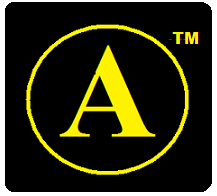






ALPHABET UNIVERSAL
GEOGRAPHY: “THE WORLD DISCIPLINE”
HUMAN • PHYSICAL • ENVIRONMENTAL
Geography has been called “the world discipline” and “the bridge between the human and the physical sciences”.
The four historical traditions in geographical research are spatial analyses of the natural and the human phenomena, area studies of places and regions, studies of human-land relationships, and the Earth sciences.
What is geography?
Geography (from Greek: γεωγραφία, geographia, literally “earth description”) is a field of science devoted to the study of the lands, features, inhabitants, and phenomena of the Earth and planets. The first person to use the word γεωγραφία was Eratosthenes (276–194 BC).
Geography is an all-encompassing discipline that seeks an understanding of Earth and its human and natural complexities—not merely where objects are, but also how they have changed and come to be.
In 1863, William Hughes (1818-1876), an English geographer, said, “Geography is a Science—a thing not of mere names but of argument and reason, of cause and effect”.
Three branches of geography
Geography is often defined in terms of two branches: human geography and physical geography. Human geography is concerned with the study of people and their communities, cultures, social, economies, and interactions with the environment by studying their relations with space and place and across space and place.
Physical geography is concerned with the study of processes and patterns in the natural environment like the atmosphere, hydrosphere, biosphere, and geosphere.
Geography as a discipline can be split broadly into two main subsidiary fields: human geography and physical geography. The former largely focuses on the built environment and how humans create, view, manage, and influence space.
The difference between these approaches led to a third field, environmental geography, which combines physical and human geography and concerns the interactions between the environment and humans.
The latter examines the natural environment, and how living organisms, climate, soil, water, and landforms produce and interact.
Understanding Greenwich Mean Time (GMT)
Greenwich Mean Time (GMT) is the mean solar time at the Royal Observatory in Greenwich, London, counted from midnight. GMT is now a time zone, not a time standard. The name Universal Time was introduced to denote GMT as counted from midnight. Today, Universal Time (GMT) usually refers to UTC or UT1.
Radio broadcasters that have a global audience and whose message is broadcast to all time zones, often use the term “Greenwich Mean Time” consistently throughout the year. Greenwich Mean Time (GMT) is defined in law as standard time in many countries and areas, which also advance their clocks one hour (GMT+1) in summer.
Greenwich Mean Time changes as one looks at one country verses another. Therefore, longitude and latitude of a particular place changes from one time zone to another. The city of London, England can be found at 51°30’N / 0°08’W. Now, let’s examine the meaning of longitude and latitude, as seen in those numbers.
Understanding Longitude (Meridians) East-West
The first rigorous system of latitude and longitude lines is credited to Hipparchus. Hipparchus employed a sexagesimal (a numeral system with sixty as its base) system that was derived from Babylonian mathematics.
Longitude is a geographic coordinate that specifies the east–west position of a point on the Earth’s surface, or the surface of a celestial body. There was a problem with determining the longitude while at sea.
John Harrison (1693-1776) was a self-educated English carpenter and clockmaker who invented the marine chronometer, a long-sought-after device for solving the problem of calculating longitude while at sea. He solved the problem of longitude by inventing the chronometer H-4 in 1760.
The first working telegraphs were established in Britain by Wheatstone and Cooke in 1839, and in the US by Samuel Morse in 1844. It was quickly realized that the telegraph could be used to transmit a time signal for longitude determination.
Understanding the Prime Meridian
In 1884, the International Meridian Conference adopted, by convention, the Greenwich meridian as zero meridian. The prime meridian, which passes near the Royal Observatory, Greenwich, England, is defined as 0° longitude by convention.
Positive longitudes are east of the prime meridian, and negative ones are west. The lines from pole to pole are lines of constant longitude, or meridians.
Because of the Earth’s rotation, there is a close connection between longitude and time. Local time varies with longitude: a difference of 15° longitude corresponds to a one-hour difference in local time, due to the differing position in relation to the Sun.
There is no other physical principle determining longitude directly but with time. Longitude at a point may be determined by calculating the time difference between time at its location and Coordinated Universal Time (UTC).
Since there are 24 hours in a day and 360 degrees in a circle, the sun moves across the sky at a rate of 15 degrees per hour (360° ÷ 24 hours = 15° per hour).
So if a location’s time zone is three hours ahead of UTC then that location is near 45° longitude (3 hours × 15° per hour = 45°).
Understanding Latitude (parallels)
Latitude is a geographic coordinate that specifies the north–south position of a point on the Earth’s surface. Latitude is an angle which ranges from 0° at the Equator to 90° (North or South) at the poles.
Lines of constant latitude, or parallels, run east–west as circles parallel to the equator. Latitude is used together with longitude to specify the precise location of features on the surface of the Earth, as in the location of a city, state, province, or country.
A graticule on the Earth as a sphere or an ellipsoid. The lines from pole to pole are lines of constant longitude, or meridians. The circles parallel to the equator are lines of constant latitude, or parallels. The graticule shows the latitude and longitude of points on the surface.
The meridians were sub-divided into 360°, with each degree further subdivided into 60 (minutes). To measure the longitude at different locations on Earth, he suggested using eclipses to determine the relative difference in time.
The ideas of Anaximander (c. 610–545 BC), a pre-Socratic Greek philosopher, considered by later Greek writers to be the true founder of geography, come to us through fragments quoted by his successors.
Anaximander is credited with the invention of the gnomon, the simple, yet efficient Greek instrument that allowed the early measurement of latitude. A gnomon is the triangular blade, sometimes with a pinhole, on a sundial that casts a shadow which could be used to tell the exact time of day.
Base 60 numeral system
The number 60, a superior highly composite number, has twelve factors, namely 1, 2, 3, 4, 5, 6, 10, 12, 15, 20, 30, and 60, of which 2, 3, and 5 are prime numbers. With so many factors, many fractions involving sexagesimal numbers are simplified.
For example, one hour can be divided evenly into sections of 30 minutes, 20 minutes, 15 minutes, 12 minutes, 10 minutes, 6 minutes, 5 minutes, 4 minutes, 3 minutes, 2 minutes, and 1 minute. 60 is the smallest number that is divisible by every number from 1 to 6; that is, it is the lowest common multiple of 1, 2, 3, 4, 5, and 6.
Finding a geographical place
Once you understand that this sexagesimal or base 60 is a numeral system with sixty as its base, you’ll be able to find the location of any place on earth once you know the longitude and the latitude of the geographical place.
You will find hundreds of cities around the world, many near you, on all seven continents on display here as well as how they are physically changing. At that point you will see clearly why geography is called “the bridge between the human and the physical sciences”.
Our understanding of Earth and its human and natural complexities—not merely where objects are but also—how they have changed and come to be. The result can help us … save our planet from environmental catastrophe.

Online – Mobile – Security – Tech
Real. Targeted. Ads.

CONTACT ALMA FOR:
Local Ads For Any Business!


ALPHABET CERTIFIED
ALMA GOLD!
Alphabet “A” Check Rated 5 Stars!

ALPHABET MOBILE ADS
AlphabetLocal.com – #AlphabetLocal
![]()
![]()
![]()
![]()
![]()












